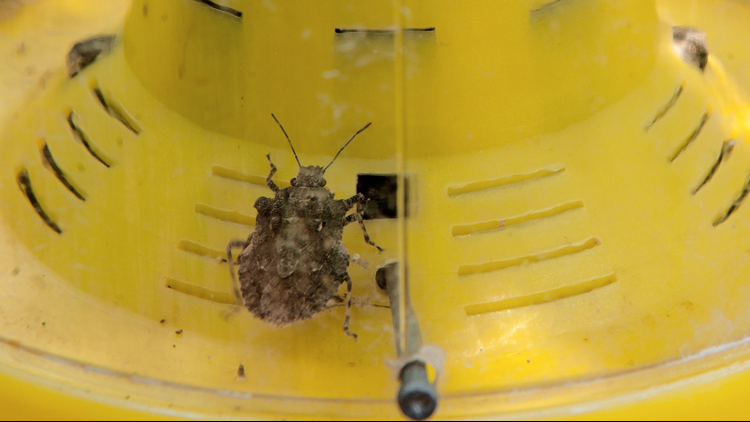It’s that time of year again for STINK BUGS!
The bugs chew up over 100 types of plants and crops, including shrubs, apples and various vegetables, and have caused major agriculture issues across the country.
They’re often found around windows and doors inside homes. Make sure you resist the temptation to squash the bugs, unless you are curious about why these insects are called stink bugs.
Make sure you seal cracks and other openings around door jams and windows with caulk to try and prevent the bugs from living in your home!
Here's 10 Other Things To Know About Stink Bugs
1. They're not from around here.
Brown marmorated stink bugs are native to Japan, China and Korea and were accidentally imported to the Allentown, Pennsylvania, region in the late 1990s. They have no natural predators in the U.S.
2. They're multiplying.
They've spread to 43 states in 2016, up from 42 states in 2015. The new state is North Dakota. They were found in New York in 2010.
3. They really stink.
People have described the smell as anything from skunk to dirty socks to coriander, and squashing them releases the odor. Do so at your own risk.
4. They're ruining agriculture.
Six states in the Mid-Atlantic reported "severe nuisance and agricultural damage" in June 2014, with farmers reporting total losses of tomato, apple and corn crops in 2013, said research entomologist Tracy Leskey of the U.S. Department of Agriculture. The stink bugs' effect can cause "scabs" and bruising on fruit and vegetables.
5. They find creative ways into houses.
If there are cracks in screens, door jams, roofs or walls, stink bugs will find them. To make your home stink bug-proof, check around windows and doors for small openings, both indoors and outdoors.
6. They like plants.
If you live near a wooded area or have a vegetable garden, your home may have a higher risk of stink bugs, said Ray Miller, owner of Upstate X-Treme Solutions pest control. If you have potted plants in your home, that's where stink bugs might congregate.
7. They won't bite you, harm your pets, or ruin your carpet.
Stink bugs don't pose any danger to humans or animals, and won't destroy indoor non-plant material.The bugs just want a warm window where they can sun themselves.
8. Vacuum them at your own risk.
Vacuuming stink bugs makes for a quick and clean disposal, but your vacuum might not smell so great afterward, said resident Veronica Miller of Irondequoit, who dealt with a few indoor stink bugs this year.
9. You can buy or make stink bug traps.
Stink bugs like light and they can't swim, so a desk lamp with a tub of soapy water underneath works as an impromptu stink bug trap. You can also buy lighted stink bug traps at local hardware stores.
10. If all else fails, call an exterminator.
Ray Miller said exterminators can spray the exterior of a severely infested house with chemicals that kill insects on contact. While there are pesticide products on the market that can legally be used against stink bugs inside the home, they are not the most effective option, as stinkbugs may live within walls and pesticides can be harmful to humans and pets inside, according to the National Wildlife Federation.
Read more: To read more about how stinkbug populations are growing nationally and what is being done to stop them, go to StopBMSB.org, hosted by the U.S. Department of Agriculture.



